Summer brings a different State of Affairs, as we face a plethora of health annoyances and potential threats. Let’s jump in!
Covid-19: Rising
Wastewater activity—a good proxy for SARS-CoV-2 infections—remains “low” nationwide but is slowly increasing, with the most pronounced increase in the West (considered at “Moderate” levels). Hawaii has “very high” levels of Covid-19.
This summer wave is largely driven by two things:
New subvariants. Covid-19, specifically Omicron, continues to mutate with small incremental changes to the spike protein, which allows the virus to cause more infections.
Behavior. With the heat, people move inside for AC. Viruses spread much more effectively inside than outside. (Get that indoor air moving!)
And, in the case of Hawaii,
Limited winter immunity. Hawaii had a very small Covid-19 wave this past winter, which means less immunity this summer and a big surge in wastewater levels and emergency department visits. I’ve noticed that Hawaii's trends are more similar to Australia or New Zealand than the mainland of the U.S., which I find fascinating.
How high will the national wave be? We don’t know, but summer waves on the mainland seem to be becoming less pronounced over time. Many epidemiologists expect Covid-19 virus will eventually become a winter respiratory virus, like its relatives. Thanks to hybrid immunity (vaccines + infections) proving longer immunity, smaller stepwise waves occur yearly.
With a slight increase in infections comes a slight increase in hospitalizations nationwide. Thankfully, hospitalizations are starting at a very low level. In fact, this year's hospitalizations have been lower than any previous year.
Unfortunately, as of May 1st, hospitals are no longer required to report Covid-19 data to U.S. Health and Human Services. It’s now purely voluntary, and only 38% of hospitals continue to do so (compared to more than 90% of hospitals during the emergency). This provides a biased view, but we must work with it for now.
What’s the fall plan for vaccines? FDA recommended an updated vaccine formula to target KP.3 if possible. This likely means Novavax will have a slightly “older” formula because they can’t update their protein vaccine as quickly as their mRNA vaccine counterparts. (Read this previous post if you have no idea what I’m talking about.) Deciding which Covid-19 vaccine to get this fall will be challenging as there are tradeoffs (I’ll let you know how I think about it closer to the fall.) This week, the CDC advisory group—ACIP—is meeting to discuss who is eligible for a Covid-19 vaccine this fall.
Other viruses: Some unusual patterns
Norovirus—think nausea and diarrhea—is increasing, which is unusual for summer but not impossible. In 2014, an outbreak in Oregon affected 70 individuals who swam in a lake— they were 2.3 times more likely to get norovirus than those who visited the park but did not go in the water.
Why are we seeing an uptick now? Epidemiologists don’t know for sure, but we have a few guesses:
The emergence of a new strain. This caused other summer upticks, like one in 2002.
Change in testing behaviors. This may be a blip, given fewer tests.
Unknown unknowns. Norovirus seasonality is complex, but some studies have shown that higher temperatures may be associated with norovirus transmission.
Wash those hands. Soap works, but hand sanitizer doesn’t. (And don’t swim if you have diarrhea.)
Pertussis—whooping cough—is increasing in some pockets of the United States, like Delaware and Kentucky (hat tip to Dr. Caitlin Rivers for bringing this to attention).
This follows an increase in the UK, where the number of cases in Q1 reached a record-breaking level. Whooping cough—which can be prevented by the routine Tdap vaccine—is another example of vaccine-preventable amnesia. Be sure to get your vaccine every 10 years (and every pregnancy, if applicable).
Heat-related illnesses: Up, up and away
A heat dome blanketed much of the Northeast last week. Temperature and other factors, such as humidity, can harm health; we saw this in healthcare data last week. Below, we see a huge jump in New York emergency room visits.
This week, the heat risk is shifting to the South. The good news is that there is a lot we can do—especially when the risk is “red” (major) or “extreme” (magenta). Enter your zip code here to learn more.
Ticks: Peaked and decreasing
Emergency room department visits for tick bites have already peaked and are moving downwards. Relief is coming soon.
Ticks can carry pathogens that cause over a dozen diseases, including Lyme disease. Lyme disease often causes flu-like symptoms and, if left untreated, can lead to more serious complications such as neurological and cardiac issues. While this is a middle-of-the-road season compared to other years, by the end of the year, more than 500,000 people will be diagnosed and treated for Lyme disease alone.
Mpox (Monkeypox): Circulating
In the Democratic Republic of the Congo, Clade I (the more severe strain) remains a significant concern, with over 20,000 suspected cases and 1,000 deaths. The majority of deaths are among kids.
Mpox continues circulating in the U.S., but exclusively with less severe strain (Clade II). Los Angeles County has seen a rise, reporting 10 new cases in the past two weeks. New York City's cases are four times higher than last year but lower than 2022. If the severe strain comes to the U.S., modeling suggests a much smaller outbreak due to existing immunity and behavior change.
Bottom Line
Enjoy your summer travel! Please stay cool out there and remember to wash your hands. If you’re at high risk for Covid-19, it may be time to wear a mask on the West Coast, especially in Hawaii.
Love, YLE
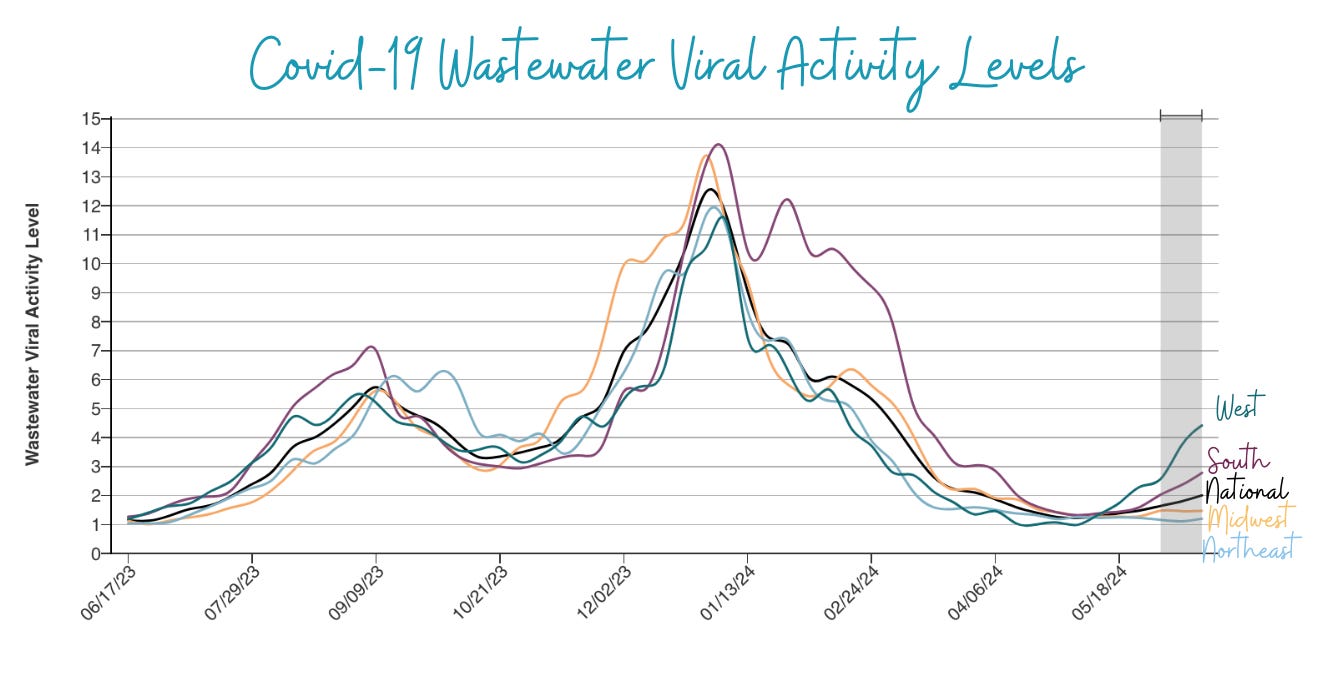
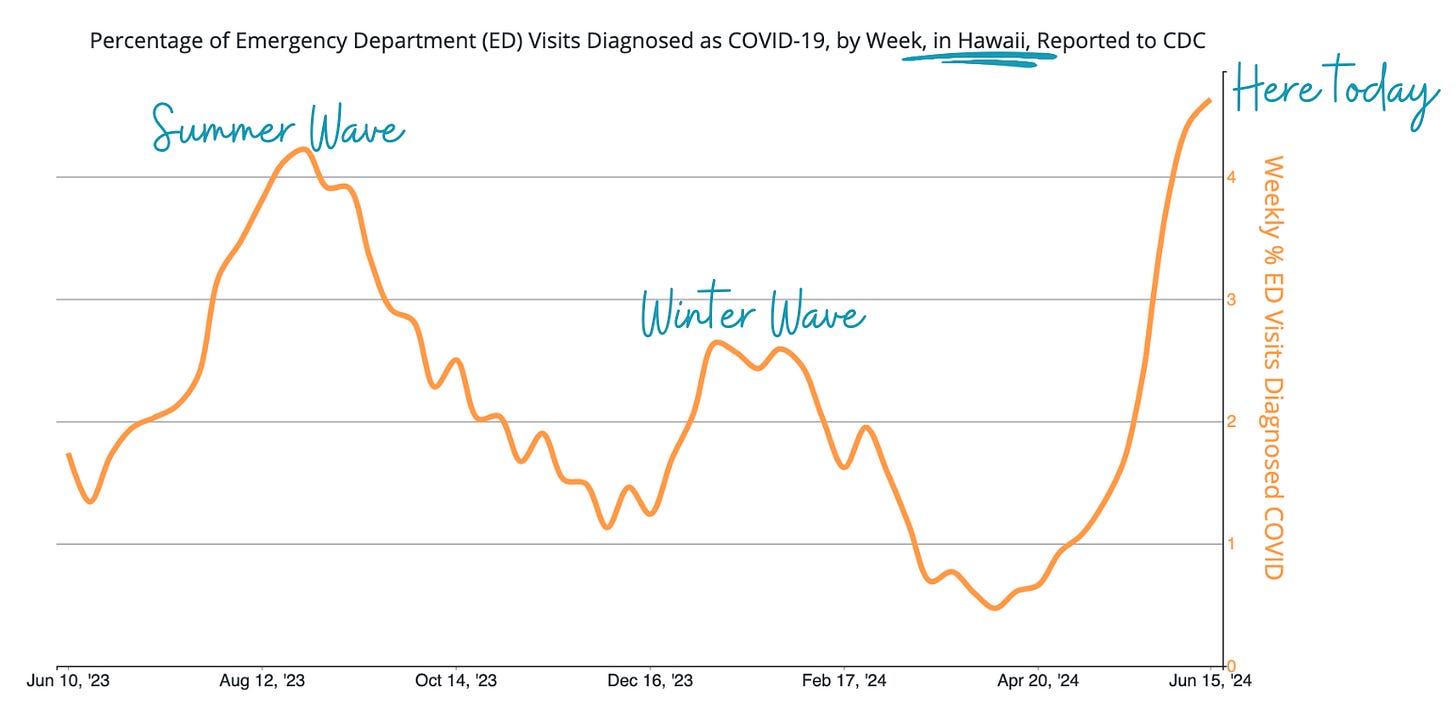
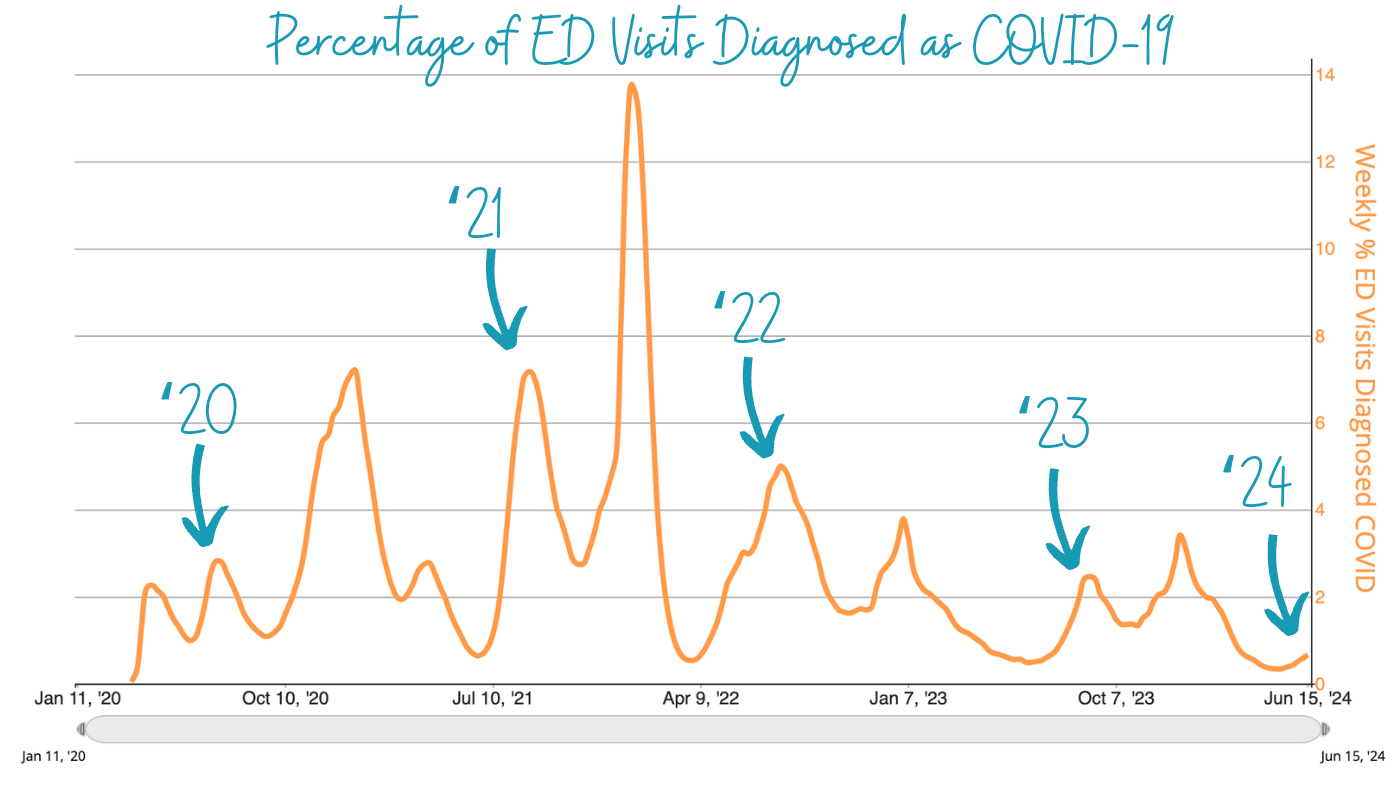
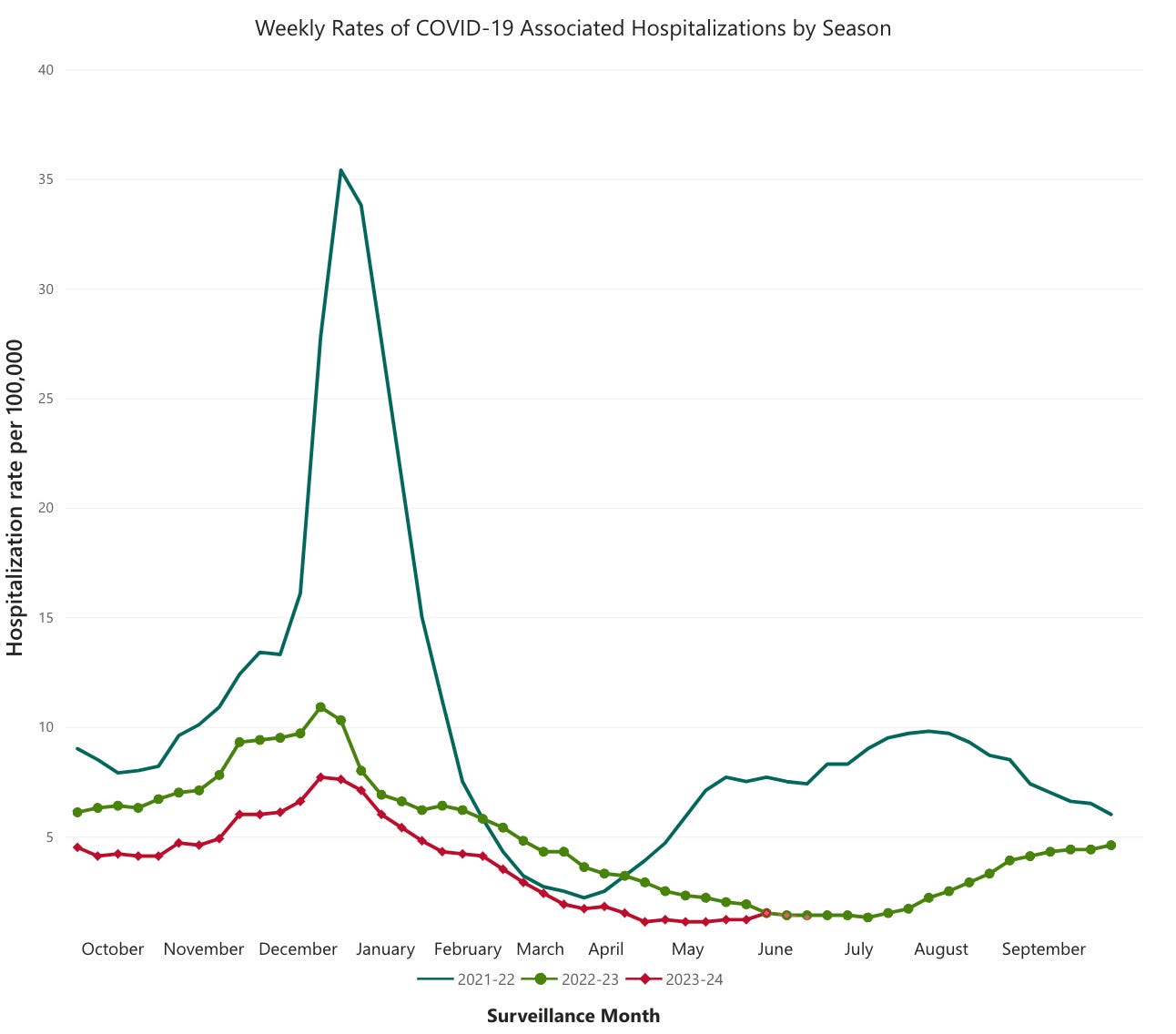
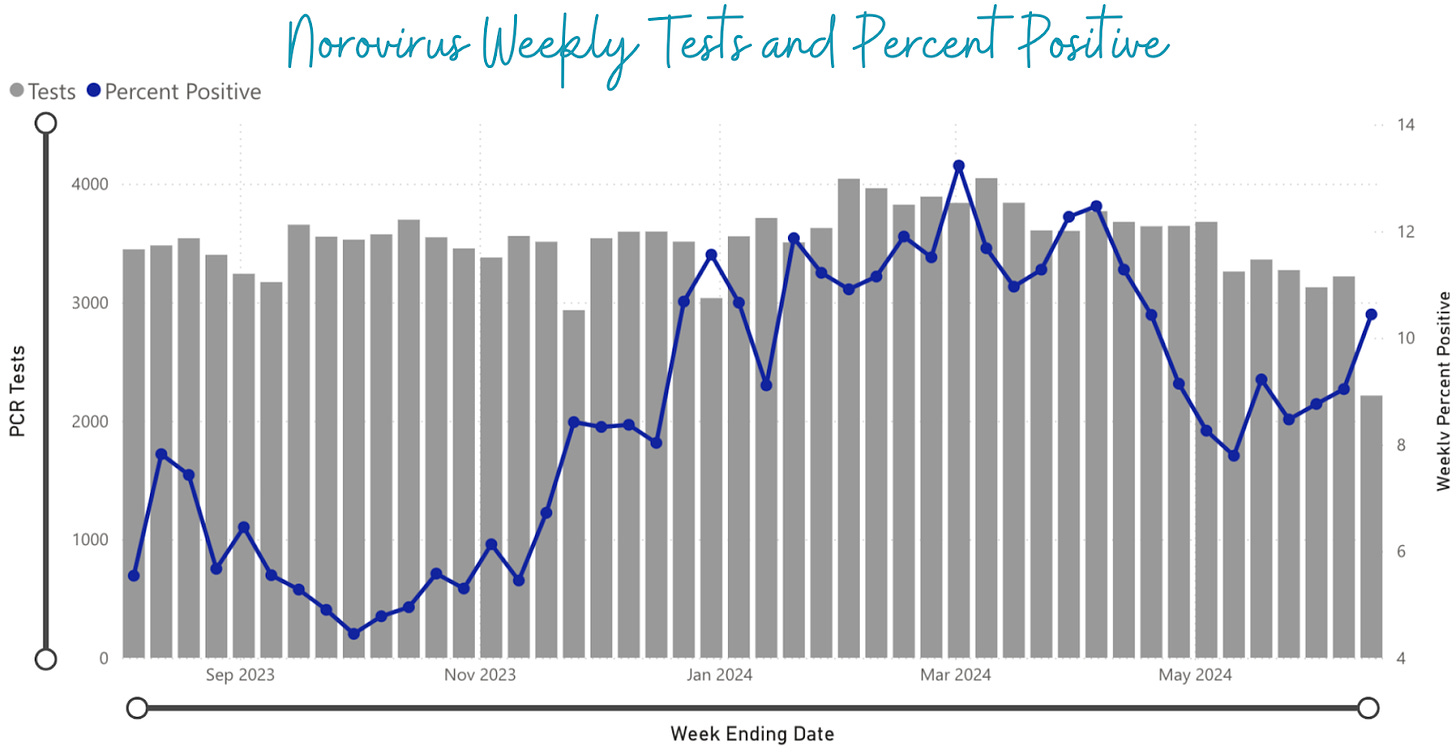
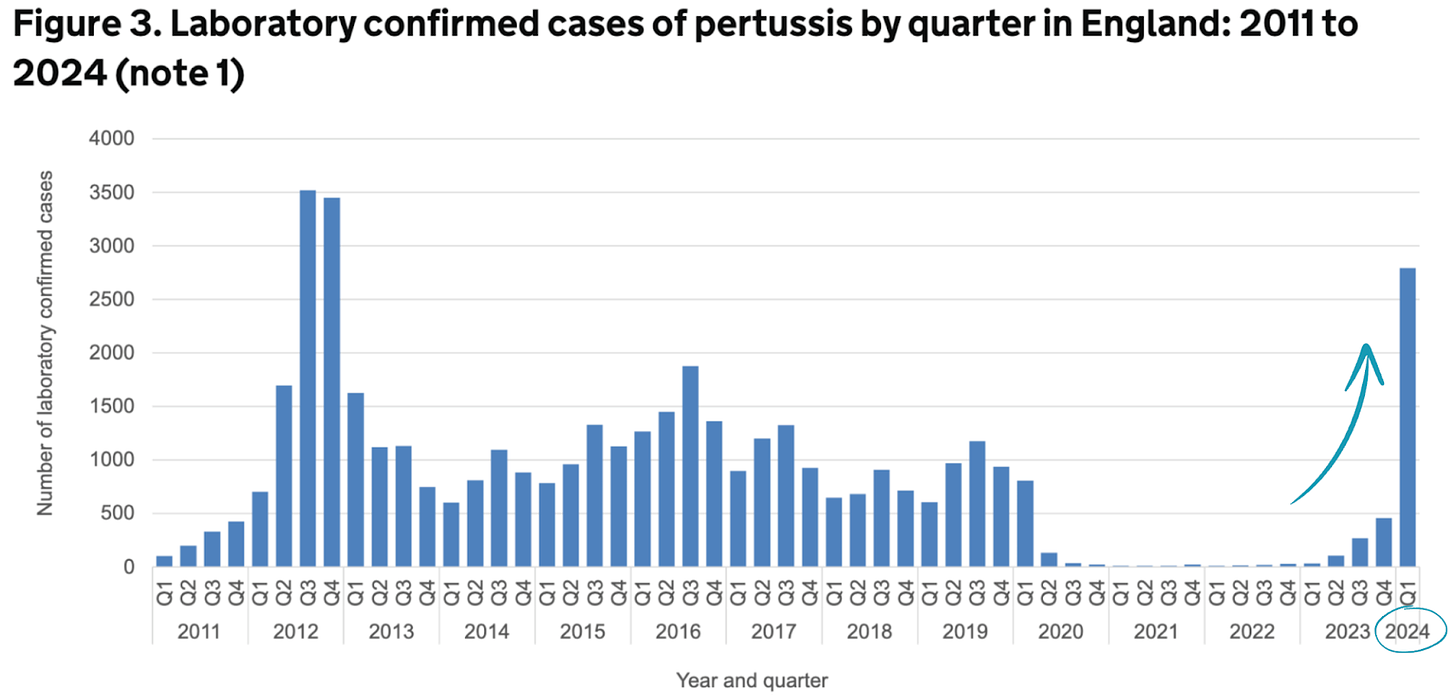
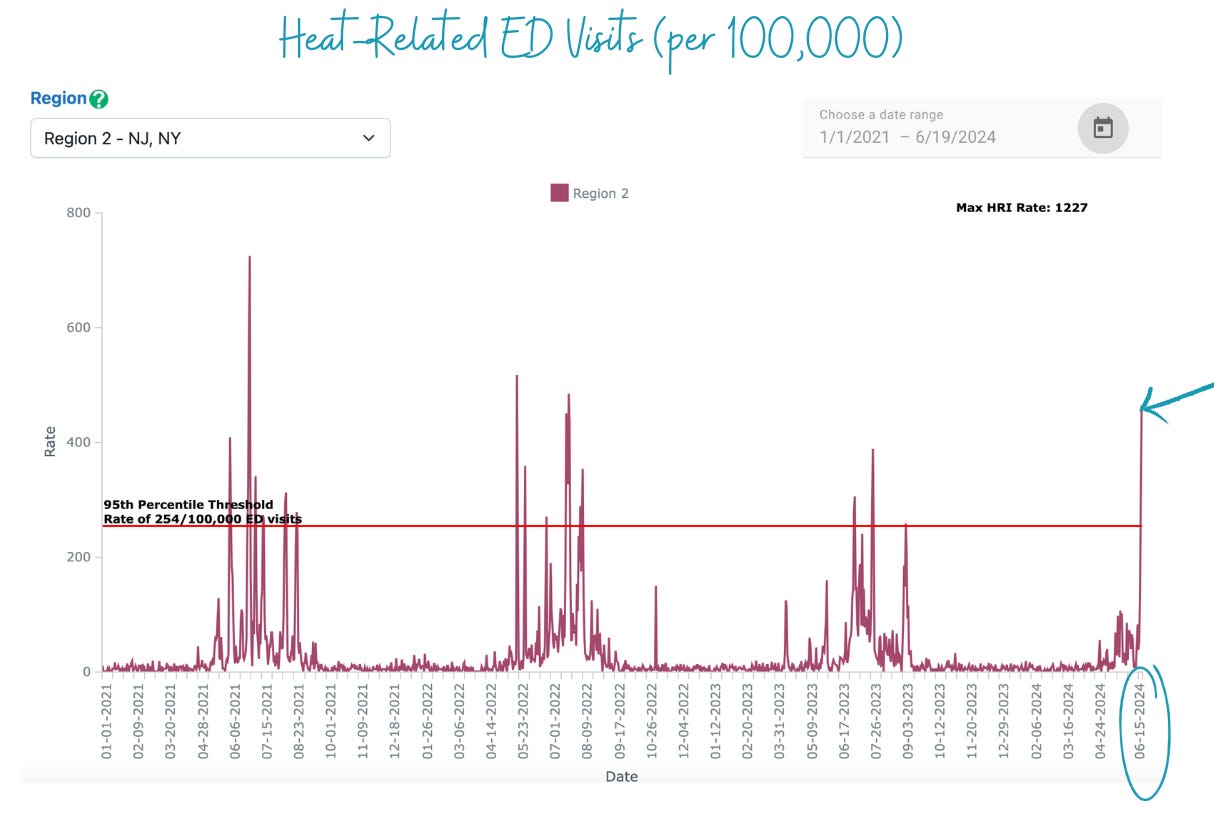
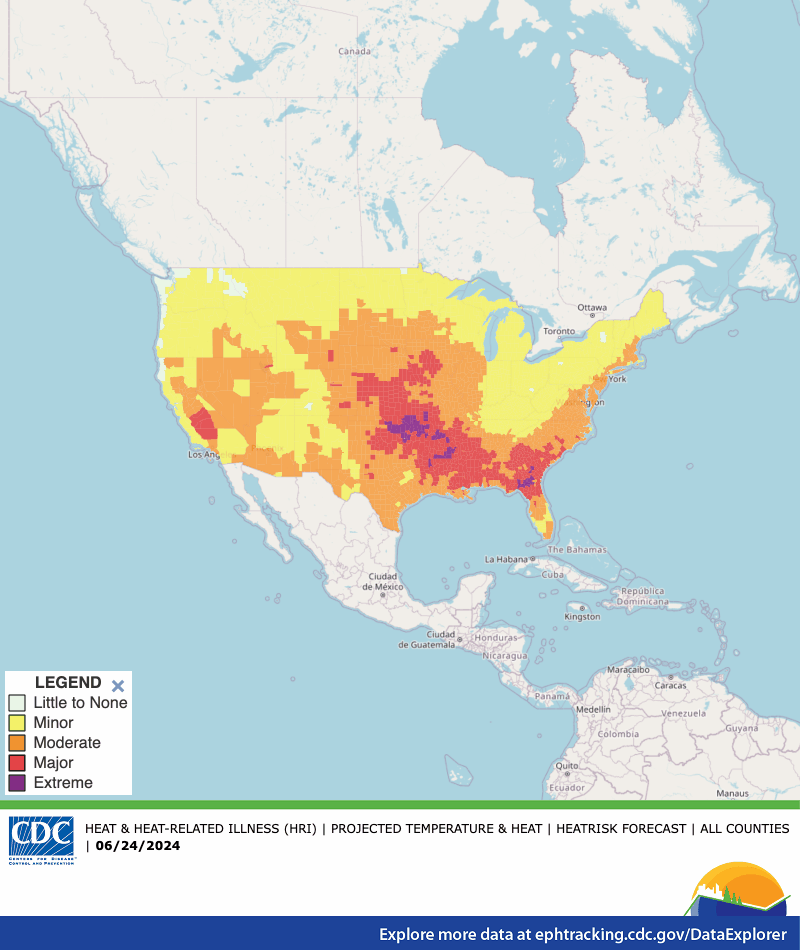
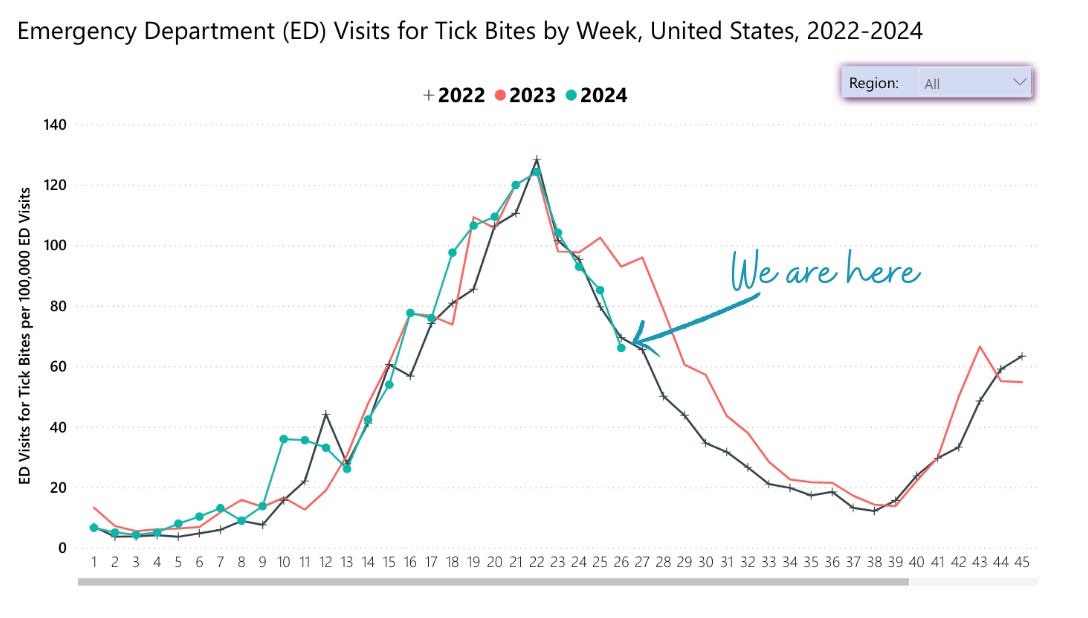



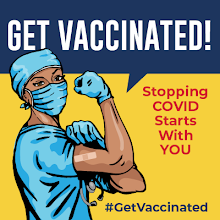







.jpg)
No comments:
Post a Comment